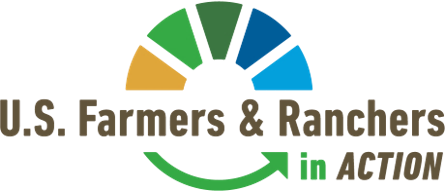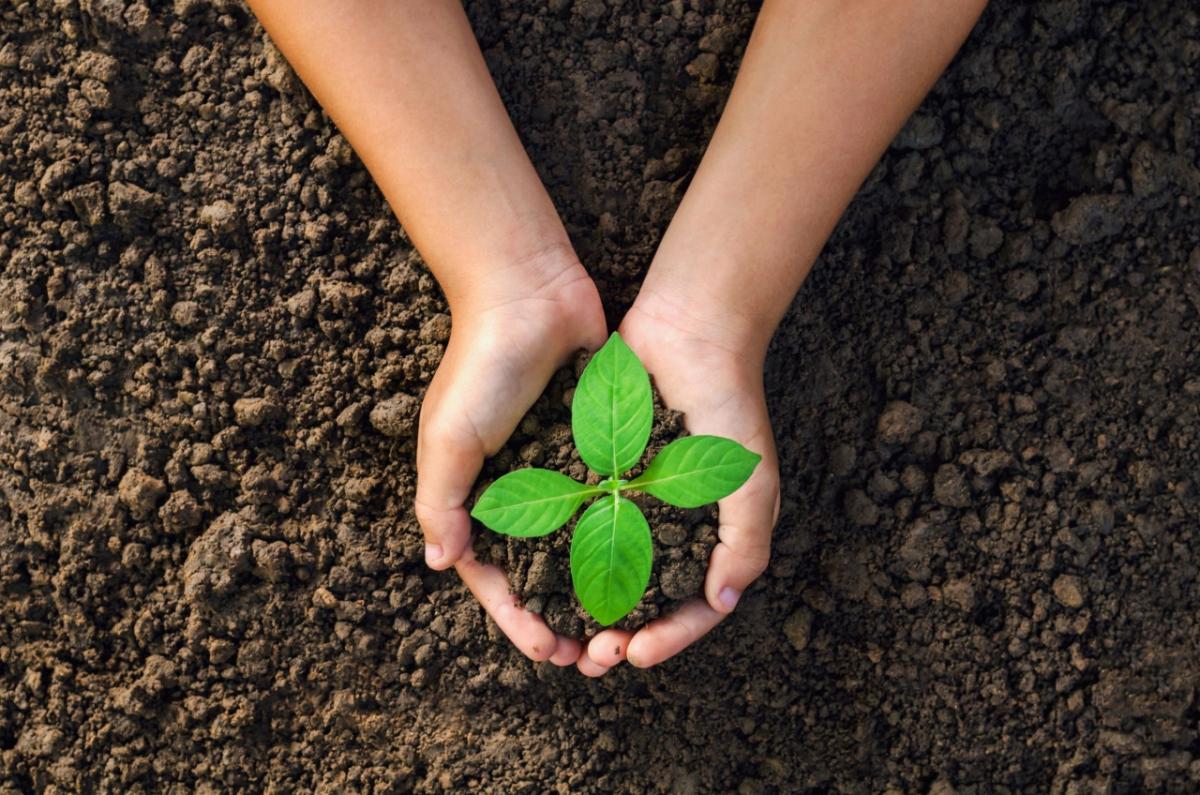U.S. Farmers and Ranchers in Action Mobilizes Tech and Finance Sectors to Fulfill Agriculture's Potential as a Climate Solution
Based on new research findings, USFRA and research partners call on investors to leverage agricultural tech and finance innovation to scale up climate-smart soil health practices and revitalize rural communities
U.S. Farmers and Ranchers in Action Mobilizes Tech and Finance Sectors to Fulfi…
ST. LOUIS, February 9, 2021 /3BL Media/ - In conjunction with World Business Council for Sustainable Development (WBCSD), The Mixing Bowl and Croatan Institute, U.S. Farmers & Ranchers in Action (USFRA) today issued a new report[1] that analyzes the state of soil health technology and identifies opportunities to find new sources of capital to scale-up the adoption of climate-smart agriculture on farms and ranches across the U.S.
By 2025, widespread adoption of climate-smart agriculture practices could reduce U.S. agriculture’s contribution to total U.S. GHG emissions from 9.9%[2] to 3.8%. These practices – including rotating crops, planting cover crops, reducing tillage and integrating crop and livestock systems – improve soil health, sequester carbon and produce co-benefits such as reduced erosion, increased water infiltration, and economic and environmental resiliency. By 2035, with increased investments and partnerships across the food and agriculture value chain and the integration of promising frontier technologies, U.S. agriculture has the potential to be a carbon sink, at -4% of total U.S. GHG emissions.
“As the U.S. Food and Ag sector coalesces around our first-ever sustainable development vision, Decade of Ag; it is critical the financial community partners with farmers and ranchers to unlock the potential of our soils to help the U.S. achieve a transitional net-zero economy,” said USFRA CEO Erin Fitzgerald. “Farmers and ranchers and the sector need investment over the next decade to realize the potential of agricultural soils as a natural climate solution and, at the same time, revitalize rural communities.”
The new report makes the case that investors should consider climate-smart agriculture investments alongside sustainable forestry and renewable energy as critical to reaching a net-zero carbon economy and meeting the UN Sustainable Development Goals.
Over the past year, USFRA has convened leaders in food, farming, AgTech and finance to identify current capital flows, review the startup ecosystem and ground-truth actionable recommendations. The culmination of this extensive research and stakeholder-input process, “Transformative Investment in Climate-Smart Agriculture: Unlocking the potential of our soils to help the U.S. achieve a net-zero economy,” examines farmer and rancher barriers to practice adoption, the current state of climate-smart soil technology, financial mechanisms available to farmers and ranchers as well the investment case for including agriculture in the broader portfolio of net zero economy investments. The research was funded by United Soybean Board and Wells Fargo & Company (NYSE: WFC).
"This report shows that nearly $1 trillion of private capital flows annually through the U.S. agricultural system," said David Bennell, Manager, Food & Nature, WBCSD North America. "It provides important insights into how companies and financial institutions can realign and increase their investments to support and incentivize climate smart agriculture practices that reward farmers and ranchers for improving soil health, enhancing water conservation and water quality, and helping build resilient and healthy rural communities.”
From a technology standpoint, the agriculture sector needs granular, accessible and efficient tools for soil sampling and soil carbon measurement, as well as the underlying data standards, methodologies and datasets to support decision making. Recommendations in the report include:
- Invest in market-based solutions measuring soil health indicators versus outcomes
- Invest in a national repository of soil carbon reference data
- Coalesce around the standardization of reference laboratory methods, spectral measurements, and the exchange of soil data
- Accelerate adoption of Farm Management Software (FMS)
- Invest in solutions to leverage farmer and rancher know-how and speed collaboration
Researchers Weigh In: Realizing the Report’s Recommendations
“The continued digital transformation of agriculture is critical as we think about solving problems and scaling solutions for the food system of the future,” said Rob Trice, principal, The Mixing Bowl and report co-author. “With the right data and the right data interoperability standards, we can upend the economics of farming and deliver measurable environmental and social benefits.”
To provide informed context for an exploration of economic solutions, an Agricultural Capital Flows analysis was conducted to map the flows of capital from asset owners through asset classes and financial intermediaries to participants in the U.S. agricultural value chain. Investment totals $972 billion annually, based on 2018-2020 data, across institutional investors (approx. $600 billion), retail investors (approx. $360 billion) and the U.S. government via federal & state payments & incentives (approx. $20 billion).
Scaled adoption of climate-smart practices will take not only the realignment of existing flows of capital toward climate-smart outcomes, but also the ability to draw in new sources and forms of capital. The report details a variety of pathways in which this capital might flow and calls out the importance of collaborative and blended approaches to capital deployment to rebalance the risk equation. In terms of directly reaching farmers and those value chain actors working closely with farmers, public equity and fixed income are the asset classes that hold the most potential.
“As companies and investors continue to build out the climate-smart investing universe, there are many opportunities to create innovative financial products that simultaneously meet the needs of investors, accelerate the transition to climate-smart agriculture and improve the livelihoods of farmers,” said David LeZaks, senior fellow, Croatan Institute and report co-author. “From working capital loans for cover crop seeds to the promise of green bonds and sustainability-linked loans, we identified multiple opportunities to promote or develop financial mechanisms that enable climate-smart agriculture.”
There is also an opportunity to increase total investment in agriculture with the growing pool of environmental, social and governance (ESG) capital looking for impacts related to sustainability, socially responsible, or mission-aligned investment opportunities. Cumulatively, these investors can make a big impact by investing in agriculture that enables and targets climate-smart practice adoption and soil health outcomes.
This report is an important step toward turning the promise of soil carbon sequestration into a reality. To continue building momentum, USFRA’s Transformative Investment (TI) Action Network will bring together farmer and rancher ecosystems with data/technology providers, investors and members of the food and agriculture value chain to co-create action plans and funding/investment streams. The end game: regenerate America’s agricultural soils as a pathway to revitalizing rural communities and reducing agriculture’s carbon footprint, to meet the challenges of the next 30 Harvests.
###
ABOUT USFRA
U.S. Farmers & Ranchers in Action (USFRA), formerly U.S. Farmers & Ranchers Alliance, represents farmer and rancher-led organizations, and food and agricultural partners, with a common vision to further our global sustainable food systems. We believe farmers uniquely contribute to nourishing our planet, people, and natural resources. Our focus is creating a proactive collaboration between the best minds in food, agriculture, science, and technology to co-create solutions that will result in environmental, social, and economic sustainability. Learn more at www.usfarmersandranchers.org.
ABOUT WBCSD
World Business Council for Sustainable Development (WBCSD) is a global, CEO-led organization of over 200 leading businesses working together to accelerate the transition to a sustainable world. We help make our member companies more successful and sustainable by focusing on the maximum positive impact for shareholders, the environment and societies. Our member companies come from all business sectors and all major economies, representing a combined revenue of more than USD $8.5 trillion and 19 million employees. Our global network of almost 70 national business councils gives our members unparalleled reach across the globe. Since 1995, WBCSD has been uniquely positioned to work with member companies along and across value chains to deliver impactful business solutions to the most challenging sustainability issues.
ABOUT THE MIXING BOWL
Founded in 2013 and based in Silicon Valley, The Mixing Bowl strives to stimulate the adoption of IT innovation in the Food & Agriculture industries through business-focused dialogue between existing industry players, start-ups, investors, and other food innovators. We do so through in-person and online thought leadership exchange, advisory services, and by funding innovative companies through our affiliate, Better Food Ventures.
ABOUT CROATAN INSTITUTE
Croatan Institute is an independent, nonprofit research institute whose mission is to harness the power of investment for social good and ecological resilience. Based in the Research Triangle of North Carolina with an extended team of affiliates in Boston, New York, Madison, WI, the Florida Gulf Coast, and Geneva, the Institute has rapidly established a reputation for rigorous, cutting-edge research and actionable analysis to support strategic decision-making by organizations and practitioners in the field. For more information about the Institute’s programs, people, and publications, please visit www.croataninstitute.org.
Contact:
Stacey Stevens
sstevens@usfraonline.org
773-332-0936
-----
Greg Avdoian
greg.avdoian@lowecom.com
414-376-7240
[1] U.S. Farmers and Ranchers in Action. 2021. Transformative Investment in Climate-Smart Agriculture. www.usfarmersandranchers.org/transformativeinvestmentreport
[2] EPA. Sources of Greenhouse Gas Emissions. Accessed 2/4/21: https://www.epa.gov/ghgemissions/sources-greenhouse-gas-emissions



